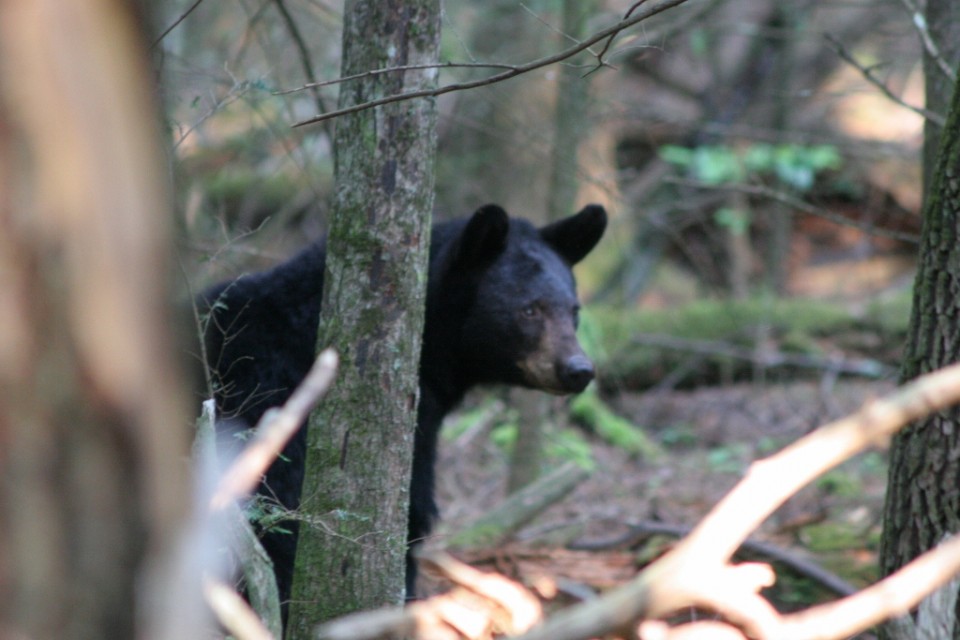Classification: Animalia – Chordata – Mammalia – Carnivora – Ursidae – Ursus – Americanus
The black Bear has long been the emblem of the Smoky Mountains. These large mammals roam the full elevation of the Smoky Mountains looking for food and places to sleep during the winter months. They are one of the most sought after animals to spot in the Smokies and people often determine the success of a trip to the mountains by how many bears they see during the National Park visits.
The American Black Bear has made its home in the Smokies for thousands of years. These omnivorous creatures live off the land, follow the spring growth of plants and insects out of the higher elevations in the early spring and then higher up during the summer months where it is cooler. In the fall, as the trees burst forth with fruit and nuts, the bears take to the trees in the valleys looking to put on pounds for their hibernation.

Black bears are quadrupeds that have the ability to stand on their hind legs for short periods of times. Most black bears in the Smokies average about 300 pounds with larger bears topping out between 500 and 600 pounds. Though the black bear can be cinnamon colored or even white, the Smoky Mountain black bears are exclusively black. Female black bears start to have their first litters between the ages of 3-5. Black bear usually have 2 cubs to a litter and they are born in January or February of the year, during the hibernation period.
And speaking of hibernation… Black bears are no longer considered to be true hibernators. Black bears reduce their metabolic rate during the winter months when food is scarce and the weather conditions are harsh. During October and November, the bears start to bed down, choosing caves, logs and other hidden and secluded areas that are protected and well covered for their long winter’s sleep. As their metabolic rate slows down, their bodies also go through some chemical changes that allow them to recycle their waste products, suppress their appetite and sleep for long periods of time. During the hibernation period they will occasionally wake up but, for the most part they ‘nap’ through the cold months waiting for the spring thaw.
If one of your goals is to see a Black Bear while you are in the Smoky Mountains, then there are a few options:
- Cades Cove – Get up early. Be one of the first cars through the gates and you might get several bear encounters while you are cruising around the loop road. By early, you need to be there before dawn waiting for the rangers to open the gate.
- Clingman’s Dome – During summer, head to Clingman’s Dome. There have been many sightings of black bears during the summer in recent years at this highest point in the Smokies.
- Watch for Large Crowds – While the sighting of a deer will stop traffic, the sighting of a black bear will bring everything to a halt. If you are stuck really far back in the traffic jam and you are wondering why the cars aren’t moving – it might be a bear.
